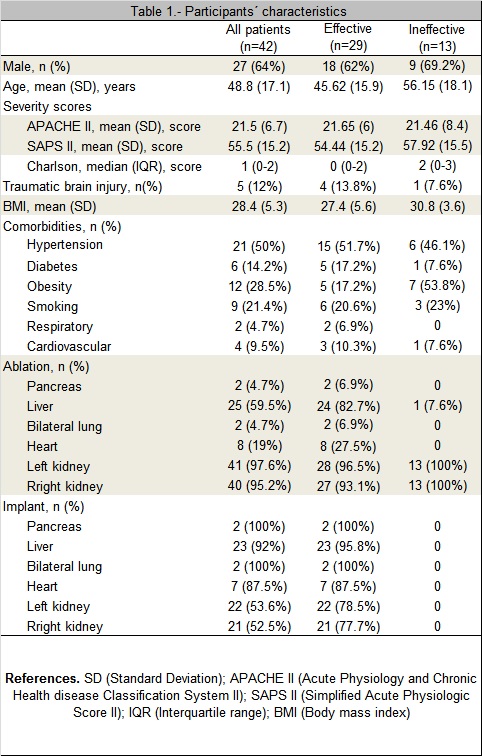Lic. Kinesiólogo Fisiatra. Especialista en Kinesiologia Respiratoria Crítica de Adultos (Sociedad Argentina de Terapia Intensiva)
Lung transplant: supply or demand problem? Description of real donor patients in a public hospital of the Argentine Republic
Daniel Rodriguez1, Pablo E Centeno1, Federico Puzzo1, Mauricio Petre1, Lisandro Sanabria1, Jailig Aldana Díaz1, Danel Ortega Rodriguez1, Matias Anchorena1, Ximena Benavente1.
1Hospital de Alta Complejidad del Bicentenario de Esteban Echeverría, Buenos Aires, Argentina
Introduction: Lungs are the organs with the greatest difficulty to be transplanted. The selection criteria are strict since its subsequent implementation is difficult.1-3 In Argentina, during 2021, 23 double-lung transplants and 12 single-lung transplants were performed. Up to February 16, 2022, there were 286 subjects on the lung transplant waiting list in our country, reflecting a significant difference between recipients and donors.4 The objective of this study is to describe the clinical-demographic characteristics of actual donor patients and to evaluate the relationship between potential and actual lung donors in a public hospital in the Argentine Republic.
Material and method: Descriptive design study. Data was obtained from the electronic medical record. Real donor patients from our institution were included between January 1 and December 31, 2021. An analysis of all demographic variables necessary to be able to classify as potential lung donor according to the criteria of the Spanish Transplant Society was performed, A descriptive statistical analysis was made.
Results: 42 real donor patients were included, of which 29 (69%) were effective. Table 1 shows the clinical-demographic characteristics.

Applying the eligibility criteria, 15 potential lung donors were identified, of which 9 met ideal criteria and 6 as marginal donors. Table 2 compares patients who meet the criteria as potential lung donors with those who do not. Of the patients identified as potential donors and presented as candidates for lung ablation, only 2 (13%) were accepted and implanted.

Conclusion: At the “Hospital del Bicentenario de Esteban Echeverría” during the year 2021, 13% of all lungs that met ablation criteria were accepted and implanted. This represents an extremely low percentage considering the difficulty that lungs present in being suitable to ablation. This leads us to question why the offered lungs are rejected and what measures should be taken to increase the number of ablated organs.
Agradecimiento al Dr. Adrian Tarditti por su labor en el desarrollo de nuestra institución y haciendo posible la realización de dichos trabajos de investigación.

right-click to download
